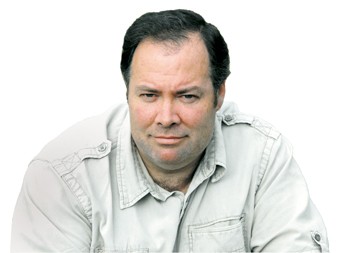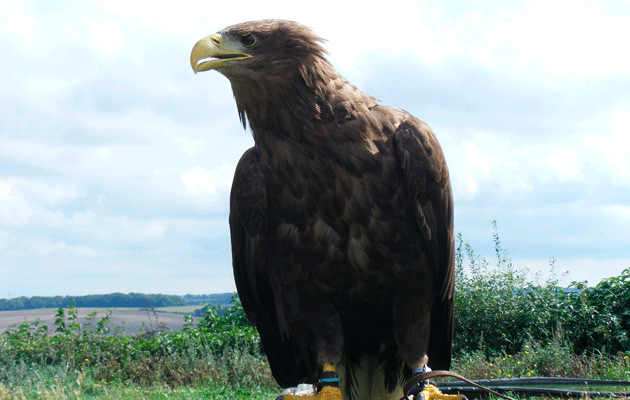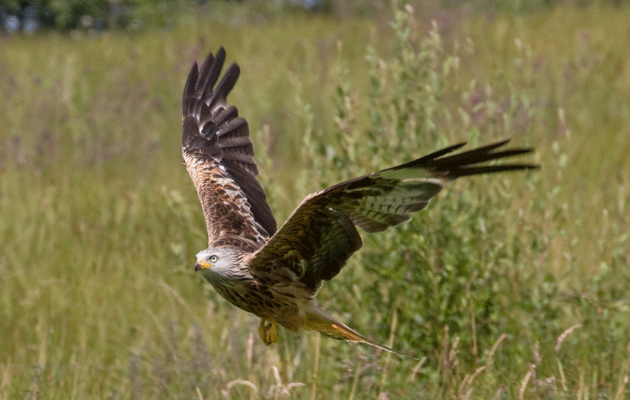Sharpshooter

We live in a surveillance society. You may well think that you deserve to be left unobserved in your own home, or on your own private property, but the plain fact is that all sorts of people have the means ? lawful or otherwise ? to watch us anywhere and at any time.
Sometimes the motives of the watchers are good, but the overall effect can be oppressive. Apparently, the UK has more state-funded CCTV cameras per head of population than any other country in the world. Wildlife protection agencies festoon certain localities with remote operating cameras. While these occasionally produce juicy footage to be used in court cases and shown on television, I have seen little evidence that they have any deterrent effect.
Yet, if the state can use surveillance devices on us, we can also use these same bits of kit for our own legitimate purposes. The small, battery-operated devices called game or trail cameras, and almost always manufactured in the US, can have a variety of benign uses. These cameras have heat-sensitive movement sensors triggering infrared flashes, and can be set to take either still or video pictures.
They are powered by batteries and can be left in position for weeks or even months. The images are captured on an SD card and can be downloaded complete with time, date and even moon phase. They were originally designed to enable hunters to monitor game paths and food plots.
I recall a television wildlife documentary which used trail cameras set to the video mode to capture startling images of tigers and snow leopards in localities where their presence had merely been suspected. I believe similar cameras, which light up the target area at night with infrared light from invisible or ?black? LEDs, have been used to spot wildcats in Scotland.
I myself have a number of trail cameras, which I use for various purposes on my farm, including monitoring deer and badger activity. What always interests me is the amount of wildlife that these devices spot during the hours of darkness. It really is an eye-opener to see roe deer threading through the cars in the yard, with supposedly watchful dogs snoring in the kennel just a few feet away.
The intriguing thing is that when I bought a new trail camera recently (one with the ?black? LED fl ash and about the size of a book), the chap behind thecounter told me that he estimated that 90 per cent of the trail cameras he sold were not used to watch wildlife, but to watch people. Especially in rural areas, it seems, trail cameras are being placed to cover outbuildings, pheasant pens, gateways, rides in woodland and the like. The aim is to capture photos of miscreants as they go about their nefarious business.
One gamekeeper I know used a trail camera to find out exactly when a group of illegal off-road motorbikers were using a particular track across a bit of lonely moorland. For a variety of reasons the resulting footage was not, in itself, deemed suitable for use in court, but the remote monitoring subsequently enabled two police officers to be in the right place at the right time to ambush the bikers on their next visit.
There is something slightly creepy about the thought of remote cameras being dotted about the countryside. However, the fact is that almost every piece of the surface of Britain ? including homes and gardens ? has been repeatedly photographed. This includes aerial photography by the Ordnance Survey, as well as satellite photography by a variety of commercial and state bodies. Not that there is anything new in this ? great swathes of rural Britain were photographed by the RAF in the 1940s. More recently, there have been camera cars from Google Steetview prowling the suburbs, while the OS-sponsored Geograph website has resulted in trespass to obtain photos of rural homes and landscapes.
With all this state and commercial snooping going on, why shouldn?t we be able to turn the tables, just occasionally?
Have your say: if you have a view on a current news topic, send it, in no more than 500 words, to steditorial@ipcmedia.com.
What is YOUR opinion?
Join other ST readers in our forums to discuss your views.
Like this article? Mark this page on a social bookmarking website…








